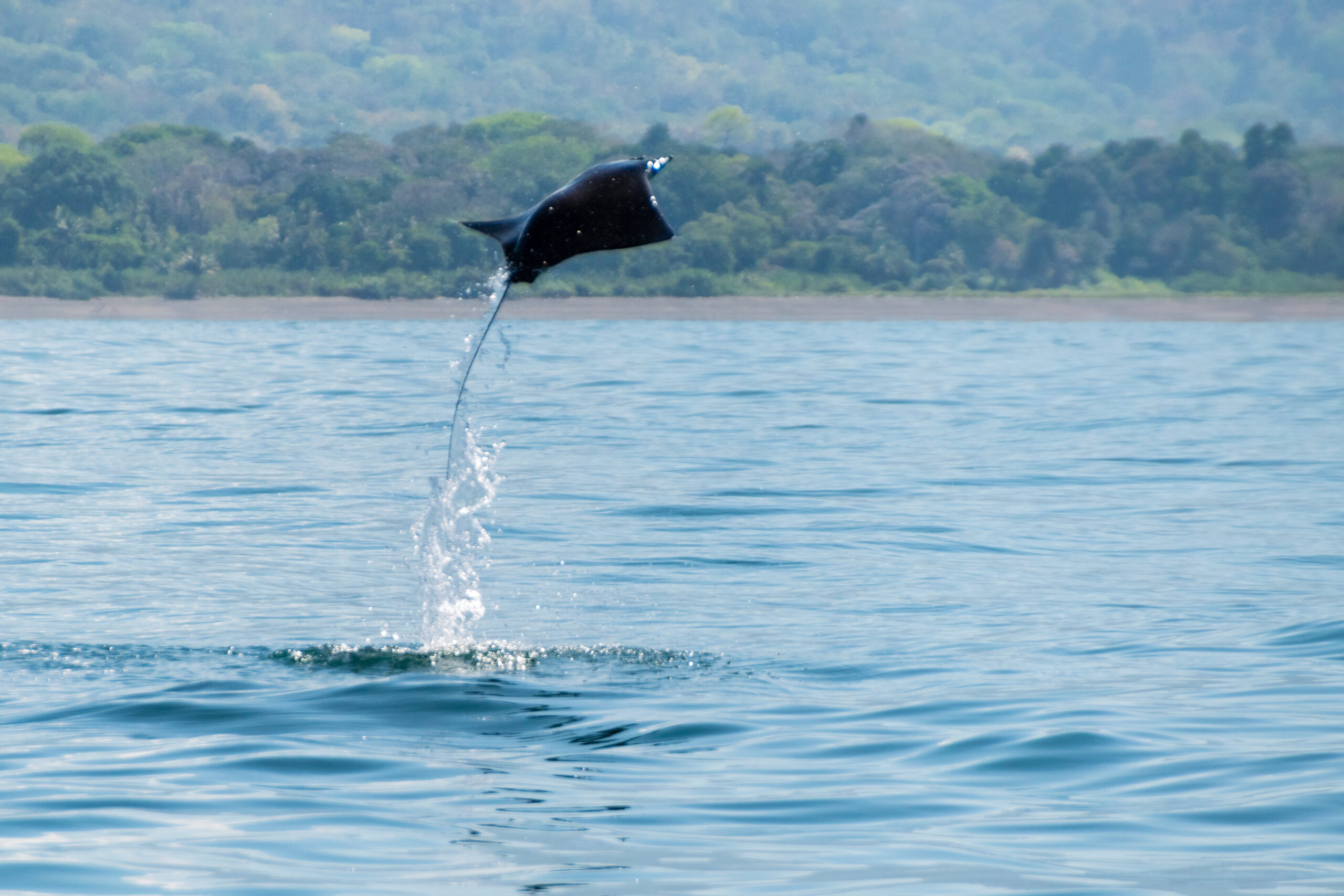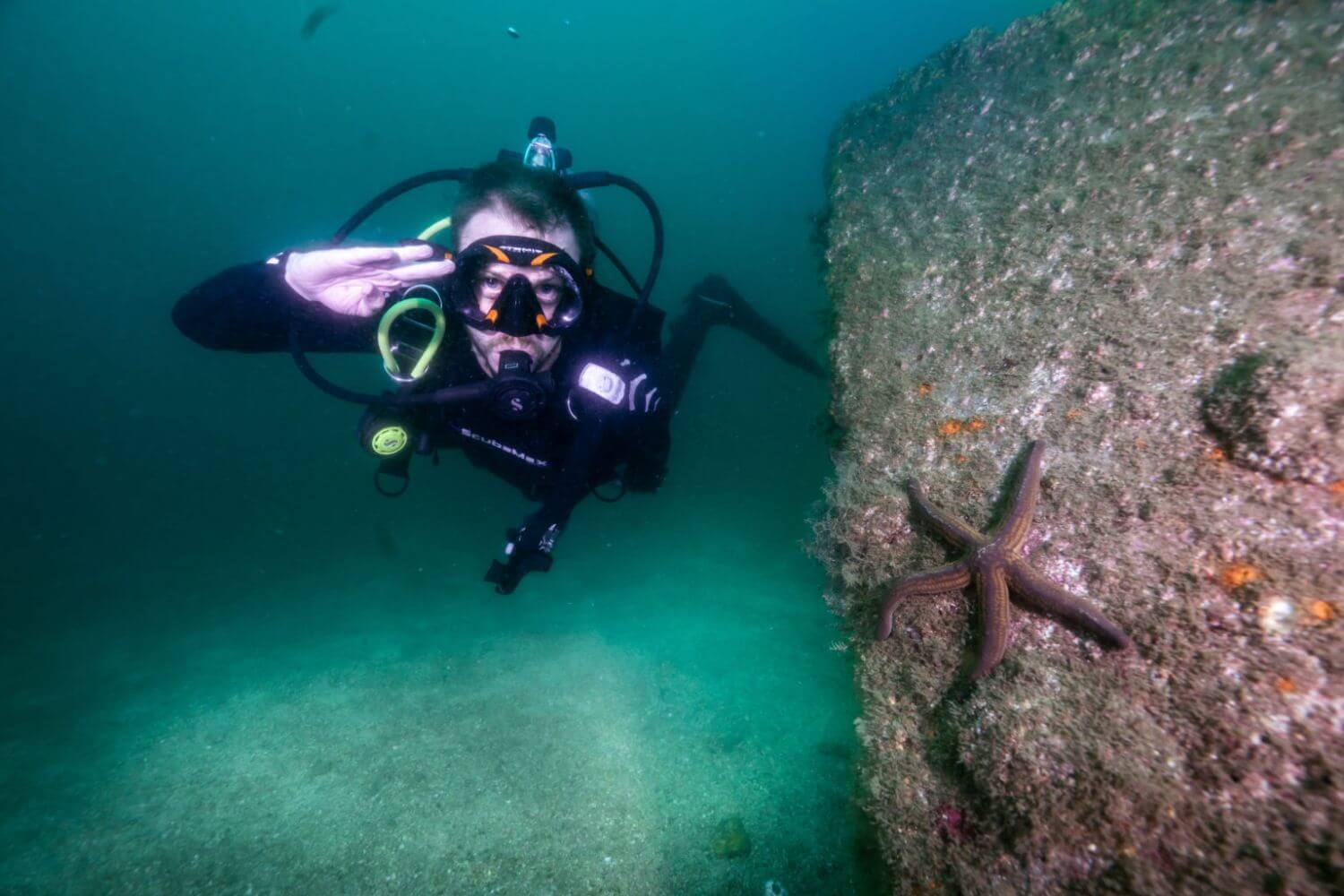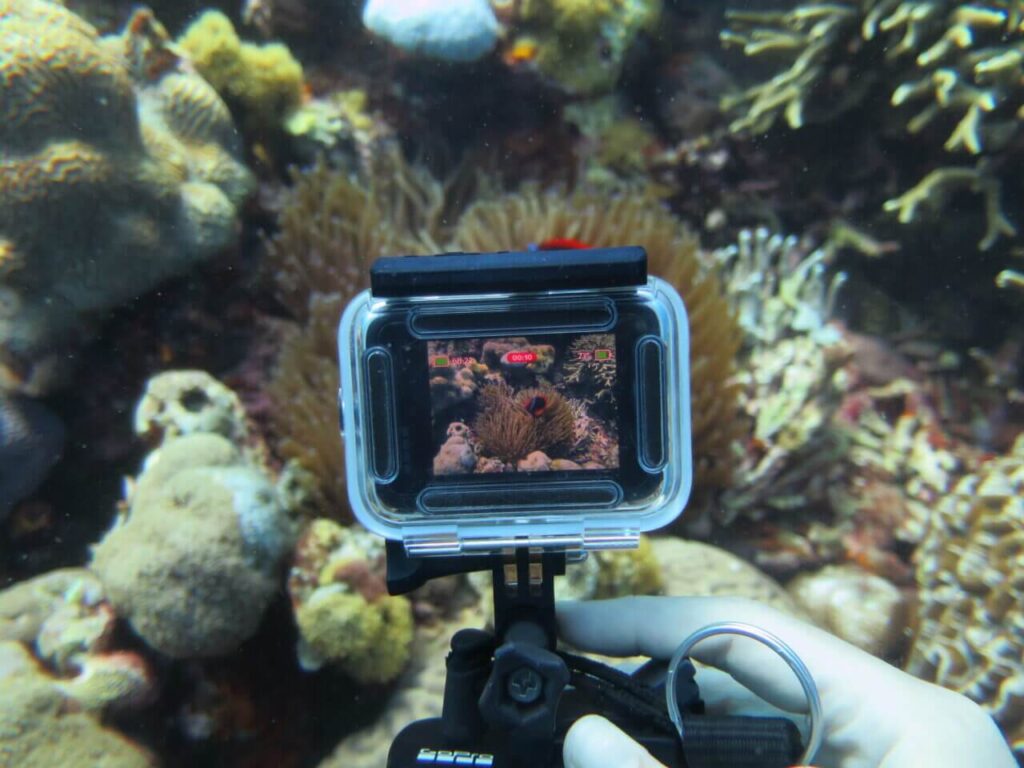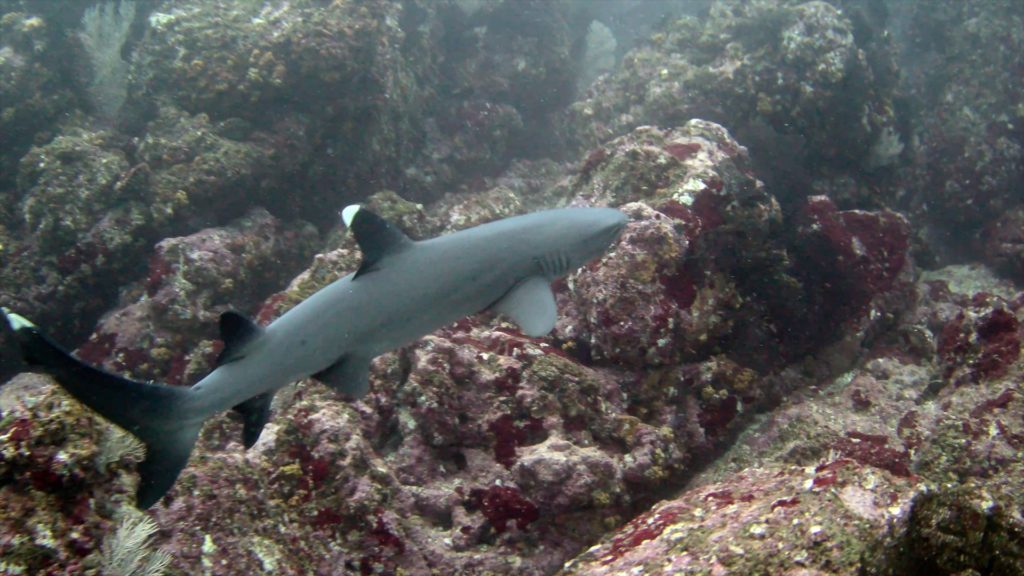
Covered in dense rainforest and rugged mountains, Costa Rica is one of the most biodiverse countries on the planet with half a million (5%) of all known species living there.
A tiny country in Central America, it is legendary among nature enthusiasts, surfers, scientists, party goers and adventurers.
But unbeknown to some, Costa Rica also boasts some of the best and most easily accessible scuba diving in Latin America.
At all times of the year, it’s warm water’s are teaming with sharks, turtles, rays, dolphins and fish and in some locations, spectacular coral reef.
During certain times of the year, it’s also quite easy to see manta rays, whale sharks and even whales
With both a Pacific Coast and Caribbean Coast, despite it’s small size, Costa Rica offers an impressive variety of different dive destinations, several of which are nestled conveniently close together.
In this Diving Squad report, we’ll be looking at the best dive destinations in Costa Rica; with information on the differences between them, when you should go and getting there.
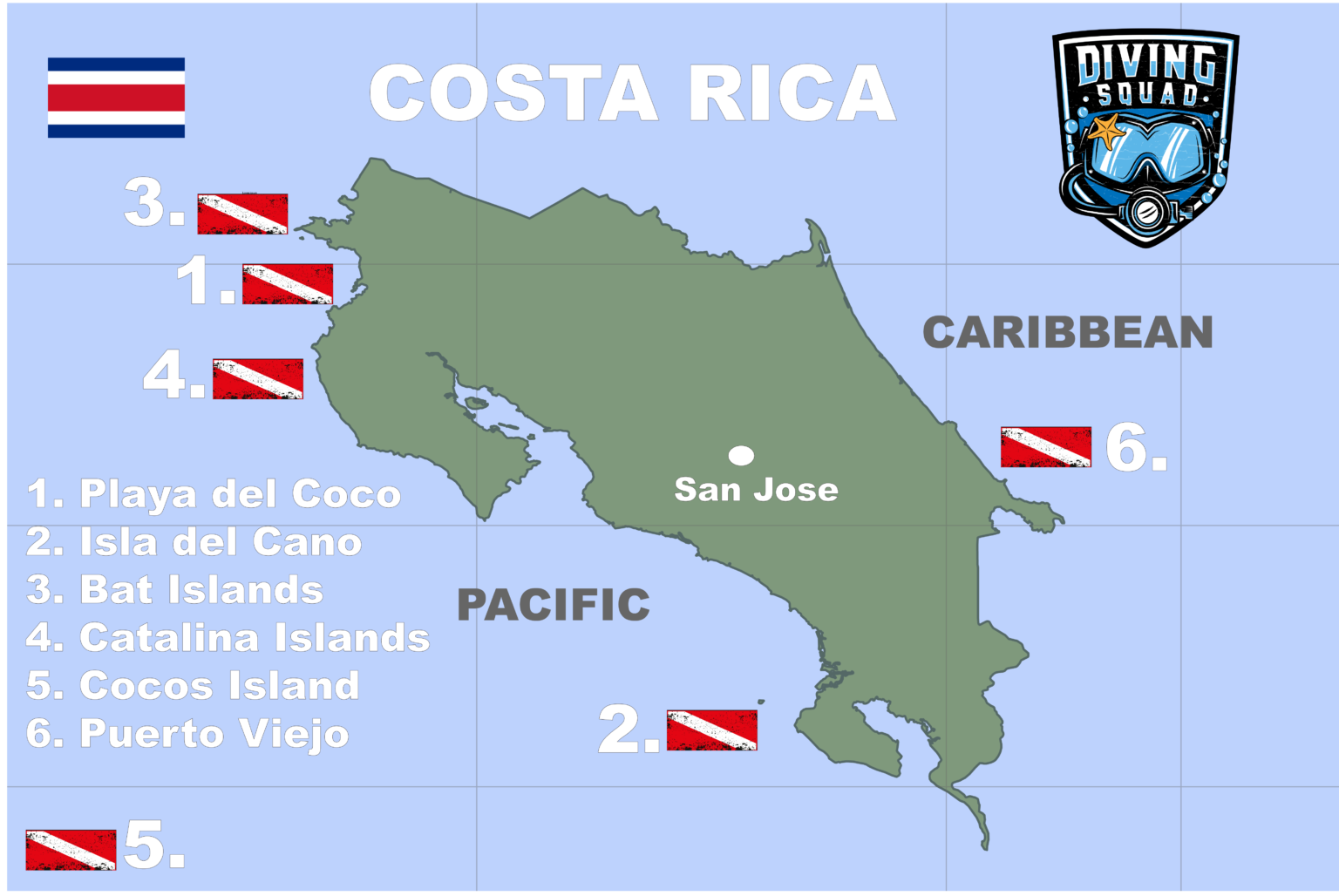
- PLAYA DEL COCO: Beginner friendly, easy to reach, reef sharks, turtles and rays, close to Bat islands and Catalina islands. North pacific coast of Costa Rica. Read more
- ISLA DEL CANO: Awesome coral reef, reef sharks, turtles and manta rays. Off the beaten track. Harder to reach. Off Costa Rica’s south pacific. Read more
- BAT ISLANDS: Easily see bull sharks, reached from Playa del Coco. Read more
- CATALINA ISLANDS: Popular site, manta rays, whale sharks and other big pelagic marine life. Reached from Playa del Coco. Read more
- COCOS ISLAND: Among world’s top diving destinations. Many sharks, rays, dolphins, huge schools of fish. Only accessible via (expensive) liveaboard. Pacific. Read more
- PUERTO VIEJO: Costa Rica’s Caribbean coast. Shallow reef and small shipwrecks. Beginner friendly. Only accessible a few months each year. Read more
1) Playa del Coco:
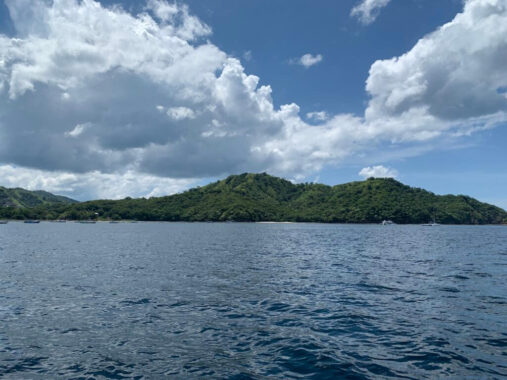
- Beginner friendly
- Easy to reach
- Can be dived all year round
- Close to other top dive destinations in Costa Rica (the Bat Islands and the Catalina Islands.
- White tip reef sharks, rays and turtles
Located on northern Costa Rica’s Pacific coast, in Guanacaste province; Playa del Coco (aka El Coco) is easy to reach, beginner friendly and can be dived all year round.
It’s also close to two other popular Costa Rican diving destinations: the Bat Islands and the Catalina Islands; both can be reached within 90 minutes boat ride from Playa del Coco.
Around the many local dive sites of Playa del Coco, you’re practically guaranteed to see large numbers of white tip reef sharks, southern stingrays, eagle rays and turtles plus many fish.
With gentle currents and depths that rarely exceed 60 feet (18 meters) as well as a smooth seabed devoid of caves etc; Playa del Coco is the best place for diving in Costa Rica for Beginners.
You can dive Playa del Coco all year round; that said December – May offers the best visibility here; which is also when Manta Rays appear around the nearby Catalina Islands.
That said; if you’re hoping to dive with bull sharks at the (also close by) Bat Islands; you should visit between late May and early November.
Playa del Coco itself is a very laid back beach town; with plenty of healthy eating and wellness activities, a respectable but not too in your face nightlife and superb surrounding nature.
Check out my Main Guide to Diving Playa del Coco HERE!
2) Isla del Cano:
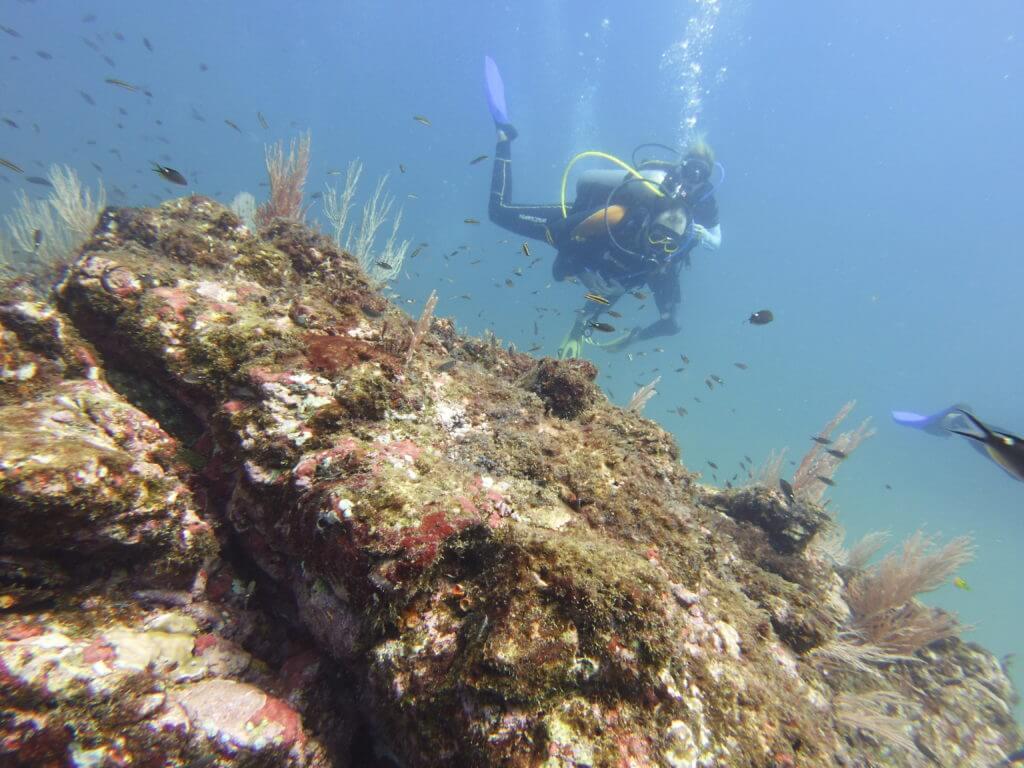
- Most suitable for divers who’re already certified
- Harder to reach / off the beaten track
- White tip reef sharks, rays, turtles and awesome coral reef
- Manta rays (late December – early March)
Also located on Costa Rica’s Pacific side, but this time way down south – some 15km off the Osa peninsular, Isla del Cano is home to the last big surviving reef along the countries Pacific Coast.
This is a great place to dive among beautiful reef with some incredible pinnacles and canyons to be explored whilst also seeing a lot of fish, white tip reef sharks, turtles and rays.
Between late December to early March you have a good chance of seeing Manta Rays (as I did!).
The medium strength currents sometimes experienced by some of the main dive sites here, mean it’s not suitable for complete beginners and none of the local dive schools teach open water certification courses.
That said, so long as you are already scuba certified it’s not an overly challenging place to dive!
You can’t actually stay on Isla del Cano; it’s one of the most strictly protected biological sites in the country – so you’ll want to stay just across from it on the mainland within Drake Bay.
Drake Bay is a very small town with just a handful of restaurants and lodging options; it’s also pretty challenging to reach; without a 4×4 you need to get a boat there for the last bit of the way.
This is of course part of the charm – Isla del Cano / Drake Bay is way more off the beaten track than Playa del Coco.
From Drake Bay you can also make a day trip to the nearby Corcovado National Park; arguably the best of Costa Rica’s rainforest reserves. Besides that and dive, there’s little else to do!
Check out my Main Guide to Isla del Cano HERE!
3) Bat Islands (aka Isla Murcielagos):
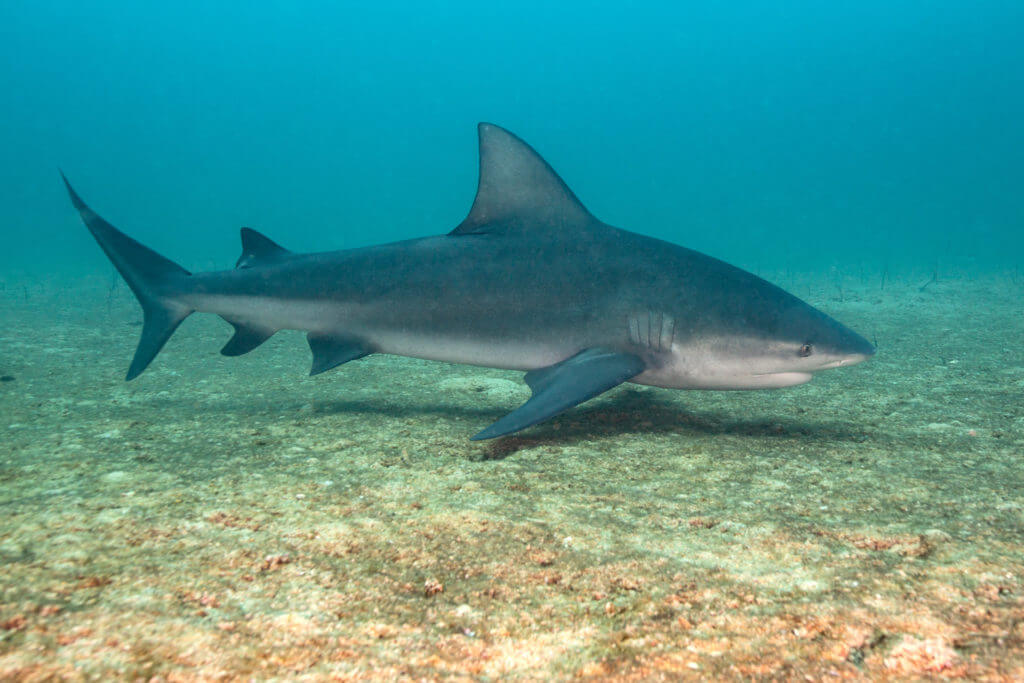
- Within 90 minute boat ride of playa del coco
- Best for shark diving (bull sharks & white tip reef sharks)
- For advanced open water divers (not the faint hearted)
- Within 90 minutes boat ride of Playa del Coco
- Also close to the Catalina Islands
- Bull shark season late May – early November
If you’ve always wanted to dive with bull sharks without forking out a load of money for a liveaboard this is you’re best chance.
It’s not possible to stay on the bat islands but you can reach them in 90 minutes on the boat from Playa del Coco (best diving in Costa Rica for beginners) which is also close to the Catalina Islands.
For this reason, the Bat Islands is an awesome place to visit as part of an overall diving trip along the north Pacfiic coast of Costa Rica.
So long as you go during the right time of year and make the necessary advance arrangements you have an excellent chance of seeing bull sharks.
Check out my main page on Diving with Bull Sharks at the Bat Islands HERE
4) Islas Catalinas:
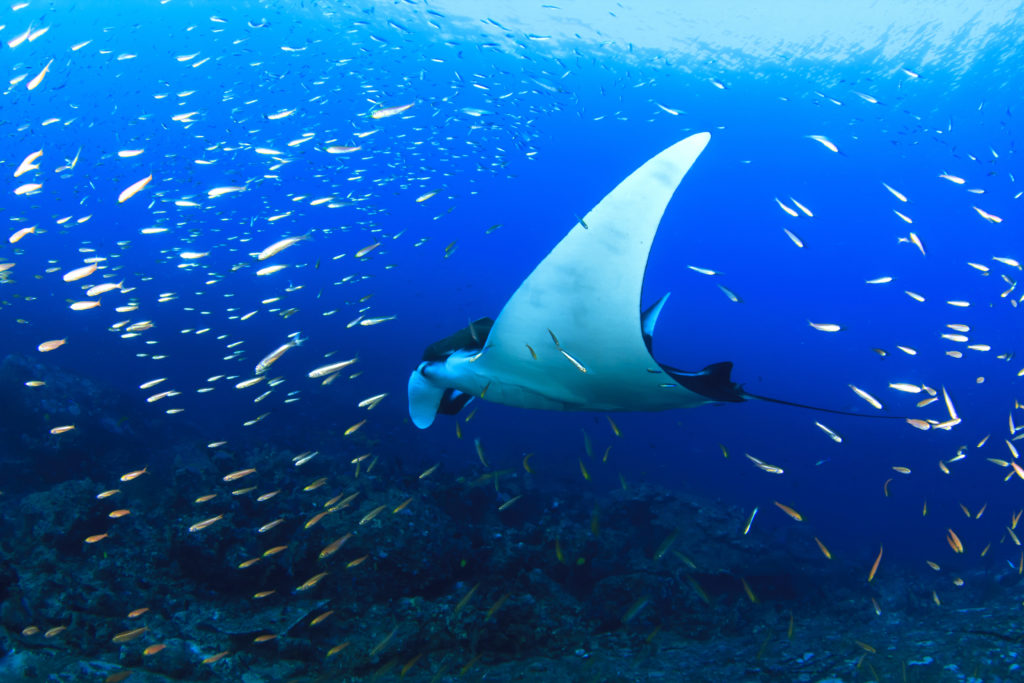
- North Costa Rica’s Pacific side
- One of the most popular dive destinations in the country
- Close to Playa del Coco and the Bat Islands
- Great place for seeing manta rays
- For advanced open water divers
- Best time to visit is September – March
The Catalina Islands (aka Islas Catalinas) are one of the most popular scuba diving destinations in all of Costa Rica.
At any time of the year, you’re guaranteed to encounter lots of white tip reef sharks, turtles, huge schools of fish and various rays including southern stingrays, eagle rays and devil rays.
But there’s more; at certain times of the year you have a great chance of seeing much bigger pelagic marine life!
Between November and May the Catalina Islands is renowned for large numbers of migratory manta rays.
And between September and March (which are also the months of best visibility), you can also see whale sharks, tiger sharks, killer whales, humpback whales and dolphins!
It’s also extremely common to see humpback whales and dolphins from the boat on your way over there from Playa Coco!
Considerable depths of around 92ft (28 m) and reasonable currents make this a destination for advanced open water divers.
You should check out my guide on Playa del Coco as that’s where you’ll be staying when diving the Catalina Islands and it’s also where the closest Costa Rica dive shops are.
5) Cocos Island:
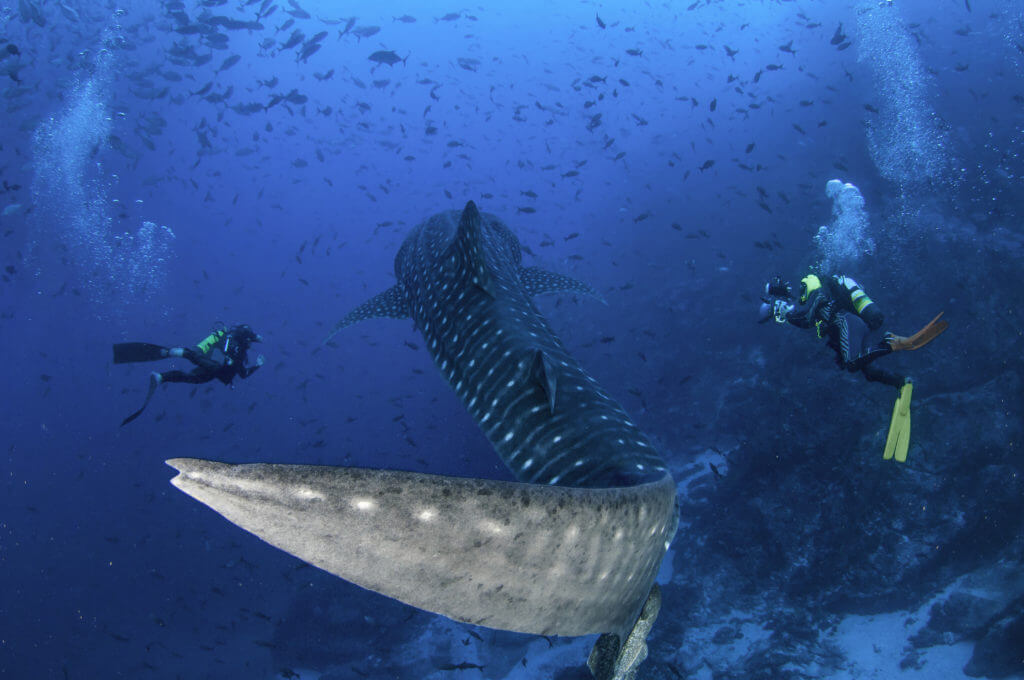
- Nicknamed “the Galapagos Islands of Costa Rica”
- Only accessible via liveaboard (expensive)
- More variety of marine life than anywhere else in Central America
- 14 species of shark, manta rays, dolphins & schooling fish
- For experienced divers
There’s no denying that Cocos Island (not to be confused with Playa del Coco!) is the absolute best diving destination in all of Costa Rica – and one of the best places to scuba dive in the world for that matter.
Situated in the Golden Triangle, 550km of the mainland of Costa Rica’s Pacific coast, the nutrient dense waters attract scores of huge pelagic species.
It’s common to see hundreds of schooling hammerheads, dozens of reefs harks, groups of manta rays and pods of dolphins as well as whale sharks and massive schools of fish.
There are roughly 20 dive sites including shallow and steep walls, deep pinnacles, drift dives and blue water diving.
For calmer waters and the best visibility, you should go between December – May (dry season). However, June – December (rainy season) is the best time for seeing manta rays and whale sharks.
You can only access Cocos Island via liveaboard – you’ll want to book a long way in advance as they fill up fast!
Sadly Cocos Island liveaboards are not cheap – but if you can afford it, this is the scuba diving experience of a lifetime.
6) Puerto Viejo:
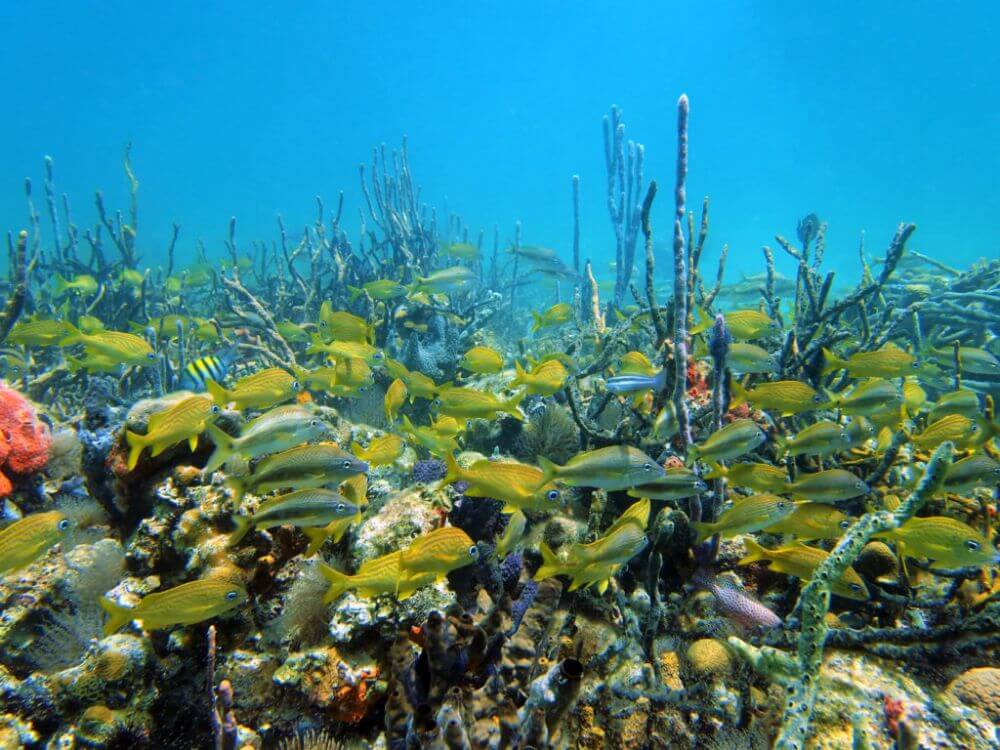
- Located on Costa Rica’s Caribbean side
- Shallow coral reef diving
- Only possible to scuba dive there for a few months each year
Located in Limon, Puerto Viejo is the only area on the country’s Caribbean side where it’s possible to scuba dive.
Shallow coral reef and a few small wrecks comprise the majority of diving here. The majority of dives are shallow and lack any current making them beginner friendly.
However; there are a few deeper dives and even tech dives for those more daring divers.
Something very important to bare in mind about Puerto Viejo diving is that it’s only possible to do so during a few months each year.
Generally speaking these months are late September – November. However, weather conditions are highly unpredictable around these months so you might not be able to dive even then.
There is only one local dive shop – Punta Uva Dive Centre. You should definitely contact them a week in advance to see if the weather forecast looks like diving will be possible.
Costa Rica Diving Squad DEBRIEFING:
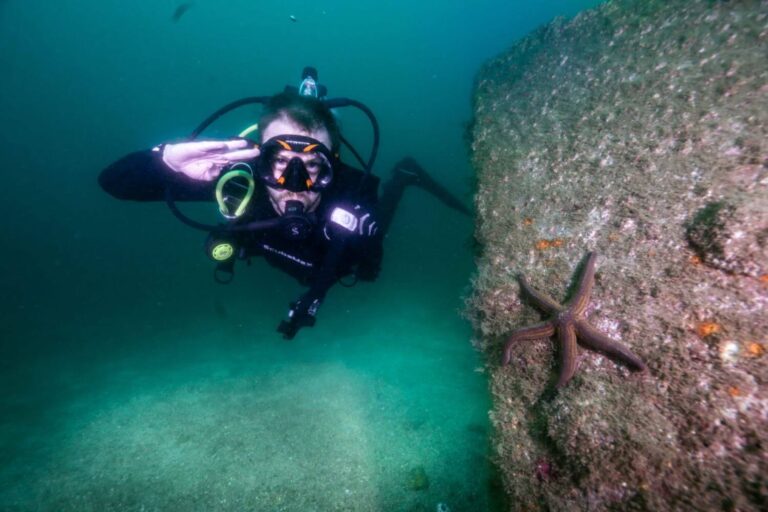
Between 2021 – 2022, I spent a year diving Costa Rica and it’s neighbouring countries Nicaragua and Panama. Without a doubt it was one of the greatest Diving Squad missions I had embarked upon up until that point and to this day, Costa Rica will always hold a special place in my heart as a remarkable country with incredible diving.
It’s insane how much diving variety there is in such a small country! Costa Rican diving is mainly defined by open water dives in the Pacific with big pelagics like manta rays, sharks and whales; but there’s also some great coral reef if you know where to look as well as a few beginner friendly places that are ideal for getting your open water certification course.
At any time of the year, you’re practically guaranteed to see reef sharks, turtles and various species of small to medium sized rays in most locations. At certain months and at certain places you can also see many other species of sharks including bull sharks and huge schools of scalloped hammerhead sharks as well as other big pelagic animals.
The many mountains, rainforests and pristine beaches of Costa Rica and the insane variety of terrestrial animals found there means there is a lot of incredible nature to see even when you’re not diving.
I will definitely be going back to continue and exploring Costa Rica in the near future!!
